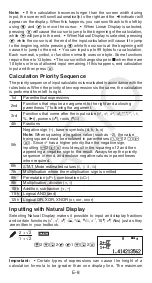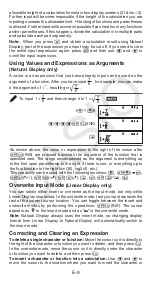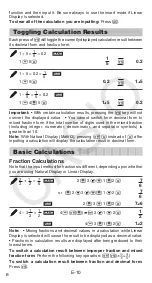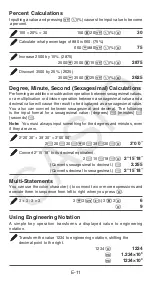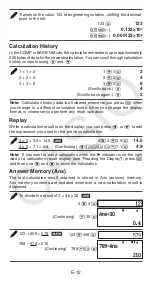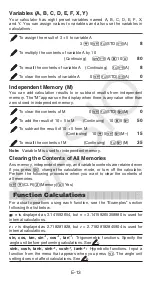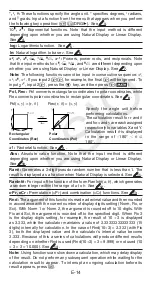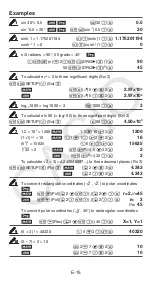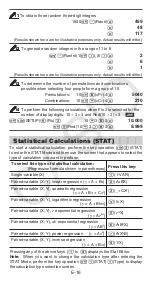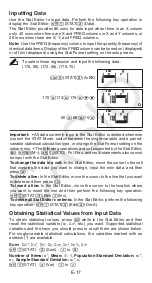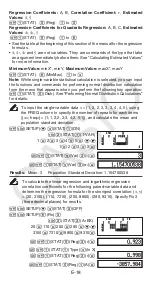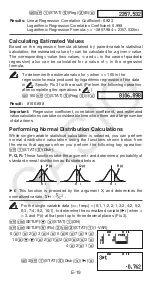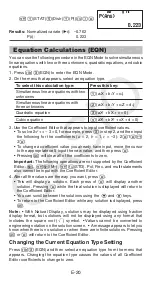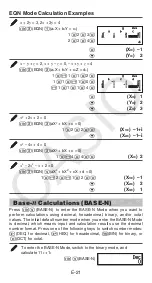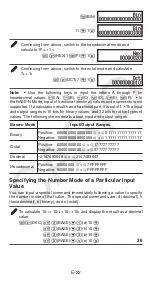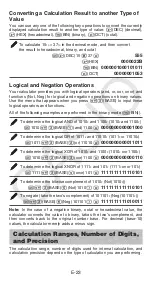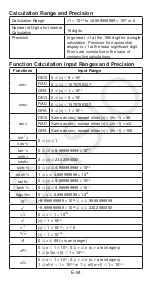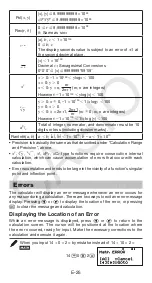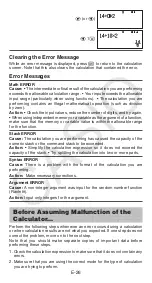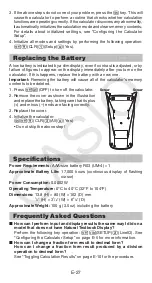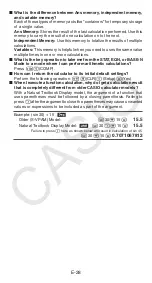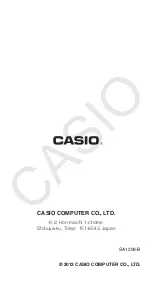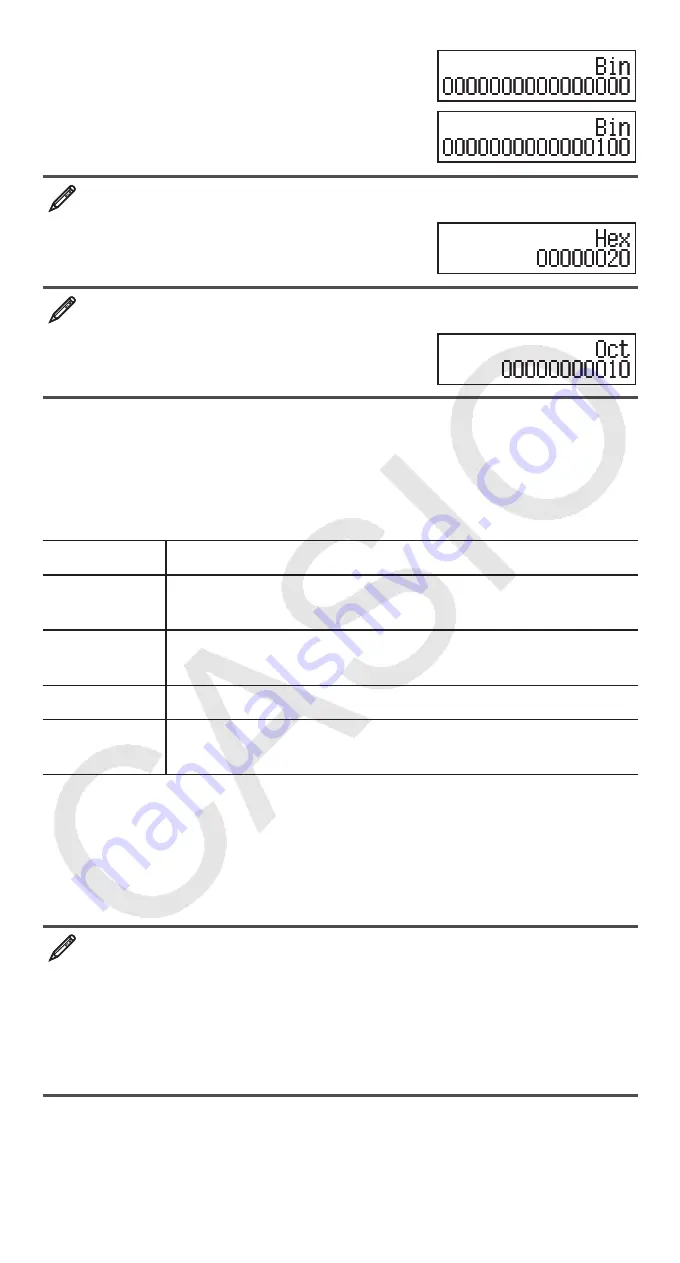
E-22
l
(BIN)
11
+
1
=
Continuing from above, switch to the hexadecimal mode and
calculate 1F
16
+ 1
16
A
6
(HEX) 1
t
(F)
+
1
=
Continuing from above, switch to the octal mode and calculate
7
8
+ 1
8
Ai
(OCT) 7
+
1
=
Note:
• Use the following keys to input the letters A through F for
hexadecimal values:
-
(A),
$
(B),
w
(C),
s
(D),
c
(E),
t
(F). • In
the BASE-N Mode, input of fractional (decimal) values and exponents is not
supported. If a calculation result has a fractional part, it is cut off. • The input
and output ranges is 16 bits for binary values, and 32 bits for other types of
values. The following shows details about input and output ranges.
Base-
n
Mode
Input/Output Ranges
Binary
Positive: 0000000000000000
x
0111111111111111
Negative: 1000000000000000
x
1111111111111111
Octal
Positive: 00000000000
x
17777777777
Negative: 20000000000
x
37777777777
Decimal
–2147483648
x
2147483647
Hexadecimal
Positive: 00000000
x
7FFFFFFF
Negative: 80000000
x
FFFFFFFF
Specifying the Number Mode of a Particular Input
Value
You can input a special command immediately following a value to specify
the number mode of that value. The special commands are: d (decimal), h
(hexadecimal), b (binary), and o (octal).
To calculate 10
10
+ 10
16
+ 10
2
+ 10
8
and display the result as a decimal
value
A
w
(DEC)
1
3
(BASE)
c
1
(d) 10
+
1
3
(BASE)
c
2
(h) 10
+
1
3
(BASE)
c
3
(b) 10
+
1
3
(BASE)
c
4
(o) 10
=
36

